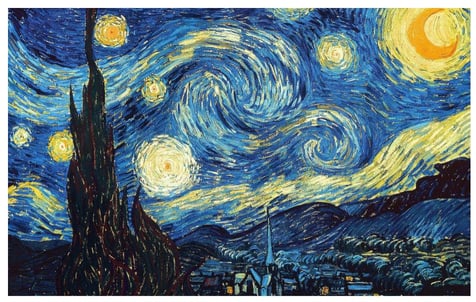
Photo caption: Vincent Van Gogh has been associated with Impressionism and has inspired many an artist to paint with looser, more expressive brush strokes. Photo Creative Commons.
Artists shape culture and change the world with their art. They lead movements towards new eras. One of the greatest examples of this is the Impressionist movement. The loose brush strokes, the impressions of light and the use of everyday subject matter are some of the identifying markers of Impressionism.
Today, urban and travel sketchers and painters owe much to this group of artists, who were among the first to take their painting activities outside. In fact, our art workshops abroad in Greece are partly inspired by this spirit. The bravery of these early culture warriors has been and will continue to inspire us.
It takes a certain amount of finesse to be able to pull off this style of painting. If you’ve always wanted to learn how to paint like an Impressionist, you may find the tips in this article helpful.
But First, A Few Facts About Impressionism
Impressionist paintings were quick, alla prima works painted on location, according to Dimitra Milan, co-founder of the Milan Art Institute. New technological advances in the art world allowed the Impressionists to capture the moment and the light in all its vagaries.
The term “Impressionism” was meant as an insult by the art establishment, according to the Tate Museum. Because the paintings by these artists appeared almost unfinished, the works drew a number of criticisms from the art world and art critics. The word “Impressionism” captured this feeling and was first coined by art critics in 1874 when a group of Impressionists, which included Claude Monet, Pierre-Auguste Renoir and Edgar Degas, held their own exhibition.
Prominent painters that are associated with the Impressionist movement include Claude Monet, Mary Cassatt, Vincent Van Gogh and Georges Seurat.
These painters often formed friendships with one another and even held exhibitions together. Some of those painters, like Monet, spent their whole lives working and refining their Impressionistic techniques.
Video caption: Claude Monet - Father of French Impressionist Painting
Paint tubes had just been invented, which freed up artists to go outside and paint. Before that time, artists had to painstakingly mix each of their paints, usually on their palettes.
This didn’t allow for traveling and painting, because paint in this form was difficult to transport. The development of art techniques has often gone along with the development of art technologies, and certainly, Impressionism is a good example of this.
On a related note, new paint colors also hit the market during that time. As Dimitra explains, colors like yellow and orange featured prominently in the Impressionists’ work, because new pigments had been invented. These pigments allowed them to capture the light in a new way.
Tips for Painting Like an Impressionist
Instruction in Impressionistic painting styles plays a key role in some of the lessons of the Mastery Program as well as in our art workshops abroad in Greece. When we are teaching students how to paint like the Impressionists, we offer the following advice to them.
- Record each brush stroke. The Impressionists revolutionized the idea that we should see their brush strokes on the canvas. Unlike the paintings of their day, they avoided blending the colors, according to Milan Art Institute co-founder, Dimitra Milan in an Art Club talk. Instead, they laid down one stroke and then another and then another. They allowed whatever they were feeling in the moment to dictate their strokes.
- Optically mix your paint colors. One way to avoid mixing colors is to allow the colors to mix optically on the canvas. So, if you’d like to create a patch of purple, instead of using a purple paint color, lay down a stroke of blue and then a stroke of red right beside it. The viewer’s eyes will optically mix them and create the shade of purple you’re after.
- Paint Outside if You Can. Artists who love urban and travel sketching and painting owe a great deal to the Impressionists. Newly-invented tubes of paint gave them the freedom to pack up their art supplies and to capture fleeting moments of light, the ripple of water waves, people conversing at a boat party and more. This practice taught them to paint quickly and to capture the most important essence of their subjects. Painting onsite and in the alla prima style will help you up your skills and to learn to place your brush strokes more precisely.
- Paint More Quickly Than You Normally Do. If your normal paint time requires between 15 and 20 hours to finish a painting, try to shorten up that time to four to six hours. You can break it up into one or two sessions if necessary.
Video caption: The Life of American Impressionist, Mary Cassatt
Final Thoughts On Painting Like an Impressionist
The Impressionists were ahead of their time. They persisted against criticism and against the art establishment of their day and went on to create one of the most memorable art movements in history. Today, paintings and prints by artists like Monet, Degas and Van Gogh hang in museums and homes around the world.
For the art student, becoming adept at painting like an Impressionist requires the right know-how as well as a dedication to practice. It also requires the willingness to push against the tendency to blend brush strokes and to take risks. If you’d like to learn more about painting like an Impressionist, look into one of our art workshops abroad or join our Milan Art Community.
Here’s More to Help You Up Your Art Game!
Art Workshops Abroad: How to Create Successful Compositions for Small Paintings
Art Workshops Abroad: The Mighty Impact of Small Scale Paintings
The Top 5 Reasons Why You Should Study Art History

